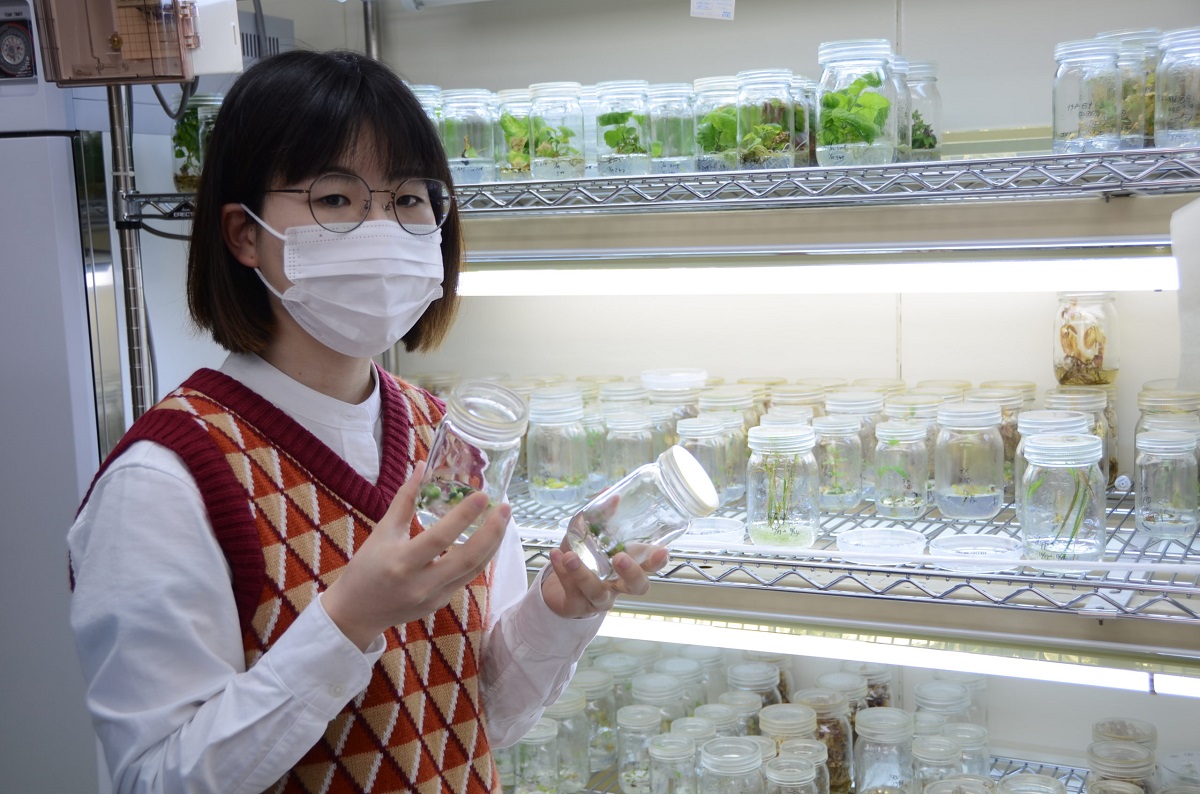
Triploid, Hexaploid Paintbrush Lilies Developed Simultaneously Using Endosperm Culture
January 27, 2021| |
Japanese scientists successfully developed paintbrush lily plant varieties that are simultaneously triploid and hexaploidy using endosperm culture. This is one of the first studies to use the technique for non-cereal monocotyledonous plants.
Researchers from both Hokkaido University and Chiba University turned their attention to the ornamental paintbrush lily and used the plant tissue culture (PTC) technique called endosperm culture to achieve polyploidy. Isolated endosperm of the plant that is naturally triploid was grown into a cell mass using PTC. A portion of it was then subjected to organogenesis to generate triploid plantlets, while another portion was treated with colchicine prior to organogenesis to generate hexaploid plantlets. By simultaneously producing plantlets with both triploid and hexaploid traits, the scientists were successful in developing a potential paintbrush lily variety with higher market value while also overcoming the seedless disadvantage of the plant by generating hexaploidy plants from the triploid plants. The scientists were also able to prove that endosperm culture can be used not just for cereal plants, but for ornamental plants as well.
Read the press release from Hokkaido University to learn more.
| |
You might also like:
- Researchers Develop Pale Purplish-Pink Petunia via CRISPR-Cas9
- Genome Modification Delays Petal Senescence in Japanese Morning Glory
- Dutch Scientists Decode Tulip Genome, The Biggest Genome Ever Sequenced
Biotech Updates is a weekly newsletter of ISAAA, a not-for-profit organization. It is distributed for free to over 22,000 subscribers worldwide to inform them about the key developments in biosciences, especially in biotechnology. Your support will help us in our mission to feed the world with knowledge. You can help by donating as little as $10.
-
See more articles:
-
News from Around the World
- Agri Ministers Outline Strategies to Feed the World in Times of Pandemics and Climate Change
- MIT Researchers Grow Wood-like Cells in Lab to Streamline Bio-materials Production
- USDA APHIS Deregulates Genetically Engineered Orange Petunias
- Factors Affecting Chinese Social Media Users' Emotions on GM Food Safety Documented
- China Approves Import of Two GM Corn Varieties
- EFSA Publishes Scientific Opinion on Six-Event Stack Maize
- European Commission Authorizes Eight GM Crops for Food and Feed
-
Research Highlights
- Triploid, Hexaploid Paintbrush Lilies Developed Simultaneously Using Endosperm Culture
- Salt Tolerant Red Gum Tree Does Not Harm Biodiversity
-
Plant
- A New Variant of CRISPR-Cas9 Could Enable Mutation on Nearly Any Plant Genomic Sequence
- Researchers Report a Simple and Efficient TALE Using Twin Primer Assembly
-
Health
- Testing of COVID-19 Vaccine for Children Ongoing
-
Read the latest: - Biotech Updates (January 14, 2026)
- Gene Editing Supplement (December 17, 2025)
- Gene Drive Supplement (February 22, 2023)
-
Subscribe to BU: - Share
- Tweet

